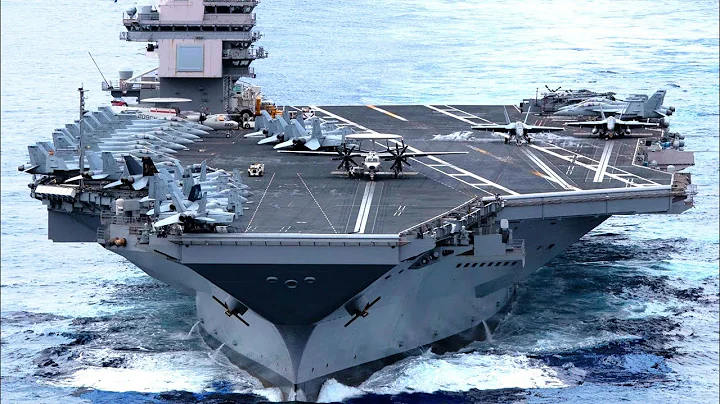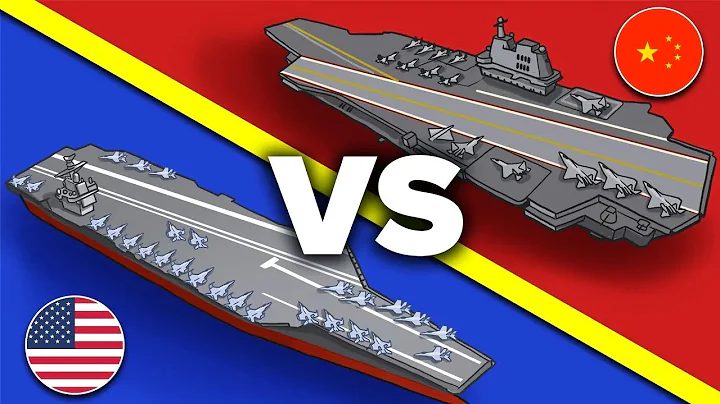
Soviet guards fire on German troops from the windows of bombed-out buildings in Stalingrad, 1942.
There is a towering statue on a hilltop in Volgograd, a city in southern Russia that hugs the Volga River, formerly known as Stalingrad. The statue, called "Call of the Motherland," depicts a woman holding a sword high, looking back over her shoulder, calling on her people.
This 85-meter-tall sculpture commemorates the 1.1 million Soviet soldiers and 40,000 Soviet civilians who were killed, injured or captured in the heroic battle against the Nazi German army in Stalingrad during World War II. More Soviet soldiers died at Stalingrad than American soldiers in all of World War II.
Stalingrad was not supposed to be one of the most decisive and deadly battles of the war, but it was there in 1942 that two ruthless dictators, Adolf Hitler and Joseph Stalin A months-long, bloody war of attrition.
Before Germany could recover from the disastrous defeat in Stalingrad, this "battle of conquest" became a "battle of survival."
Hitler's Plot to Destroy and Colonize the Soviet Union
In December 1940, Hitler announced Operation Barbarossa, Germany's large-scale invasion of the Soviet Union. Hitler was dismissive of the Soviets, famously saying: "We only have to kick open the door and the whole rotten structure will collapse."
In Hitler's view, the communist country was filled with "inferior races." , such as Jewish and Slavic . Those "inferior" races were either killed on the battlefield or imprisoned as slave labor for the conquerors of Aryan Germany, which would gain "living space" by colonizing the vast and fertile Soviet lands.
Historian Jonathan Trigg, author of "The Battle of Stalingrad as Germans Seeed It: The Death of Sixth Army," said: "For Hitler, Operation Barbarossa was about more than just defeating communism. Russia, but to completely destroy communist Russia - to wipe it from the face of the earth."
The Nazis severely underestimated their enemy. The reason why Hitler and his commanders did not think highly of the Soviet Red Army was because of Russia's poor performance in World War I , but a lot has changed in 20 years. Stalin and the Communists had transformed a weak Tsarist Russia into a "military and economic behemoth," Trigg said.

Nazis are pouring into Minsk, Russia, which was mostly occupied and destroyed by German troops.
Hitler built his base on Soviet oil
Operation Barbarossa, launched in June 1941, was Germany's largest military mobilization to date, with more than 3.5 million Nazi and Axis troops, 3,400 armored tanks and 2,700 plane. Hitler's plan was to attack simultaneously along three fronts: Leningrad in the north, Ukraine in the south, and the capital Moscow in the center. He predicted that these three fronts would be captured within 10 weeks.
From the beginning, everything went according to the German plan. The Nazis conducted relentless bombings of Soviet airfields and cities, and armored divisions captured hundreds of thousands of Soviet troops. But despite these early German victories, there was no guarantee that the desired objectives would be achieved.
Stalin commanded a Red Army of 5 million people, constantly transporting soldiers to defend the city. Retreating Soviet soldiers would be shot by their own commanders.
By the fall of 1941, heavy downpours turned Russia's dirt roads into impassable quagmire, followed by a freezing winter, forcing the Germans to suspend the invasion until the following summer.
Having failed to capture Moscow, Hitler devised a different strategy in 1942. He believed that Germany's Achilles heel was insufficient domestic oil reserves, which meant that the German army was often short of fuel. Hitler did not invade Moscow again as everyone expected. Instead, he launched "Operation Blue" and marched south into the Caucasus to seize the rich oil fields in the Soviet Union.
Stalingrad was the only way for the Nazis to move south, but the German high command did not believe that the occupation of Stalingrad was of important strategic significance.
Trigg said: "In all of Hitler's meetings with senior commanders at the time, he kept talking about oil, oil, oil - that was the point. Stalingrad was never mentioned."

A German Stu Squadrons of Kaiser planes flew towards Stalingrad and continued a massive aerial bombardment of the city.
Stalingrad was bombed into rubble, and the Soviet advantage came
In August 1942, the powerful German 6th Army arrived in Stalingrad under the command of Friedrich Paulus.
"Paulus did what the Germans usually did, massively bomb the city in the hope that the Soviets would escape," Trigg said.
Paulus ordered a massive air raid on Stalingrad, a narrow city stretching north and south along the Volga River. Following the relentless bombardment, heavy shelling leveled large swathes of the city. Then, let the German infantry move in under the armored tank divisions.
Trigg said: "Paulus found that in an urban environment, with streets riddled with craters and littered with rubble, armored units performed worse than useless."
The Battle of Stalingrad became Fighting from street to house, the Soviets were able to force the German tanks into dead ends and trap the infantry behind them. Exposed Nazis were easy targets for Soviet snipers or even Molotov cocktails dropped from rooftops.
Trigg said that Paulus was not a very innovative commander and believed that the best response was to increase firepower: more air strikes and artillery shells.
"Yes, it took a terrible toll on the Soviet defenses at Stalingrad, but it also made it harder for tanks to advance," Trigg said. At the same time, the German supply lines were stretched and unable to replenish fuel and weapons for the 6th Army's continuous attacks.
As weeks turned into months, Stalin saw an opportunity to make a statement in the city. In October 1942, Stalin issued Order No. 227: "Ni Shagu Nazad!" ("No step back!"). There would be no Soviet retreat or surrender at Stalingrad, even if it cost the lives of tens of thousands of Soviet soldiers and civilians. Those who surrendered faced courts-martial and execution on the spot. "'We will drown the Germans with our blood' - that's how the Soviets fought," Trigg said.

The ruins of a large "L"-shaped apartment building are on the far left, and a destroyed railroad is on the right Worker's house.
The Soviet Union's bold strategy cut off the German retreat
Stalin sent General Vasily Chuikov to command the surviving Soviet troops in Stalingrad, who were trapped between the advancing German forces and the Volga River. Instead of letting more and more Soviet soldiers die on the German killing machines, Chuikov decided to go all out and try something the Soviets had never done before: pincer offensive.
The German 6th Army's flanks were defended by under-trained and exhausted Axis allies from Romania, Hungary, and Italy.
Trigg said: "In terms of morale, they actually didn't want to stay there."
On November 19, 1942, Chuikov divided his troops into two divisions and launched a surprise pincer attack. The armies of Romania, Hungary, and Italy fought bravely but were quickly defeated. Before Paulus could respond, nearly 250,000 German troops were completely surrounded and cut off from their supply lines.
Paulus and the German High Command did not break out immediately, but decided to hold the position and use airlift supplies. But the airlift was a disaster, unable to provide enough food, fuel, and ammunition for the encircled German forces. As Russia's daunting winter set in, German soldiers began to die of starvation and exposure.
"Throughout December, the Germans were ground to dust," Trigg said. “They were running low on ammunition, running low on fuel, starvation was setting in, and the Soviets were killing them.”
The Turning Point of World War II
Both German and Soviet propaganda turned Stalingrad into a “must-win” for both sides, even as his soldiers starved by the thousands or were sent to Soviet prisoner-of-war camps, Hitler Also refused to give in. In February 1943, the last remnants of the once-rising German 6th Army finally surrendered. An estimated 500,000 German soldiers were killed in Stalingrad, including 91,000 prisoners of war. German prisoners of war returned home.
Stalingrad is often cited as the military turning point of World War II after which Germany was never able to regain its tactical superiority. But Trigg said Germany's defeat at Stalingrad still remains. There was another important reason.
"This was a turning point as far as the German people and their mentality was concerned," Trigg said. "Every newspaper in Germany published the death lists of soldiers killed in Stalingrad. Endless. There was almost no family in Germany that was not touched by this defeat. Someone lost a son, someone lost a father or a brother. "
No amount of Nazi propaganda could hide the fact that Hitler's "glorious invasion" of the Soviet Union was a resounding failure.

The 'Call of the Fatherland' statue now stands in Volgograd, Russia, to commemorate those who fought at the Battle of Stalingrad
PS: The "Call of the Motherland" statue is 85 meters tall and is the tallest statue of a woman in the world. The construction started in 1959 and took more than 8 years to complete. There are 200 steps going up, and these 200 steps represent the 200 days of the Battle of Stalingrad.
The pictures are from the Internet. If there is any infringement, please contact us to delete it.
If you like it, you can also leave a message about what you want to see. Anyway, I You don’t have to write [dog head]





















